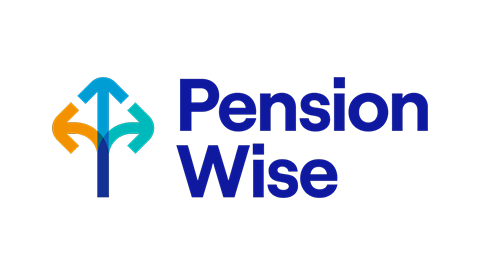Drawdown frequently asked questions
Planning for drawdown
-
Can I still pay into pensions if I’m in drawdown?
Yes, you can still make pension contributions. You’ll still receive tax relief on personal contributions provided you’re within your contribution limits and you’re under 75.
Pension contributions are normally restricted to a £60,000 annual allowance. This applies to any benefits you’re building up in defined benefit (e.g. final salary) or money purchase (e.g. personal, self-invested) pensions.
Once you take your first taxable income payment from drawdown, the amount you can pay into money purchase (e.g. personal, self-invested) pensions will be limited to £10,000 each tax year. This is called the Money Purchase Annual Allowance. Taking tax-free cash alone won’t have an effect. If you’re already in capped drawdown you won’t be affected either, unless you flexibly access pension benefits later on or elsewhere.
-
Do I have to move my whole pension into drawdown?
No, you can move a bit in at a time if you want to. You can normally take up to 25% of the portion you move into drawdown as a tax-free cash lump sum each time.
-
What happens to my drawdown pension when I die?
When you die your drawdown pension can be passed to your beneficiaries, in most cases free from inheritance tax. From 2027, where an estate is valued over the inheritance tax threshold, some pensions may be subject to inheritance tax.
If you die before 75, your beneficiaries can normally withdraw what they like from your pension tax free. If you die at or after 75, your beneficiaries can still withdraw what they like, but it will be taxed as their income.
You can nominate as many beneficiaries as you like and can change them at any time. The easiest way to do this is online. Just log in to your account and choose Account Settings, followed by Manage SIPP beneficiaries. Though these nominations aren’t binding they do let us know your wishes, which must be taken into account.
Please remember tax rules may change in the future. Our factsheet has more detail if you’d like to read more.
-
How much tax-free cash can I take?
You can normally take up to 25% of the amount you use for drawdown as tax-free cash. This will be paid as a lump sum when you apply.
For example, if you had a pension worth £100,000 and you decided to use it all to move into drawdown, your tax-free lump sum could be up to £25,000. If you decided to only use £40,000 of that pension to move into drawdown, you could have up to £10,000 paid as a tax-free lump sum.
-
Do I need to choose my own investments?
With us, you’re free to pick your own investments, choose from ready-made portfolios (though these aren't specifically designed for drawdown), or pay an adviser to select investments for you. To get started you could take a look at our drawdown investment ideas.
If you’ve thought about your drawdown goals, but are unsure how to achieve them, you may want to consider investment pathways.
There are four pathways to choose from, and each matches a potential retirement goal with an investment option.
While they’re tailored to specific goals, these pathways and investment options don’t take your circumstances into account, or how much risk you’re comfortable with. Find out more.
-
What is the lifetime allowance?
As of the start of the 2024/25 tax year, the lifetime allowance has been abolished. But, three new allowances have taken it’s place.
Under the old lifetime allowance, there used to be a limit to the total value of pension benefits you could build up throughout your lifetime and generally receive up to 25% tax free. This limit was set at £1,073,100 for most people. However, as of 6 April 2024, the lifetime allowance has been abolished and replaced with three new allowances. These are the lump sum allowance, the lump sum and death benefit allowance, and the overseas transfer allowance.
- The lump sum allowance normally provides an upper limit to the tax-free amount of certain lump sums that can be taken across an individual’s pensions. This allowance is £268,275 for most people. Payments that use up this allowance include pension commencement lump sums (PCLS) and the tax-free element of uncrystallised funds pension lump sums (UFPLS).
- The lump sum and death benefit allowance applies to payments that use up the lump sum allowance as well as the tax-free element of serious ill health lump sums and certain non-taxable lump sum death benefits. For most people, this allowance will be £1,073,100.
- The overseas transfer allowance provides a limit on transfers to Qualifying Recognised Overseas Pension Schemes (QROPS). This allowance is £1,073,100 for most people. Any value that exceeds this allowance will normally be subject to the Overseas Transfer Charge (OTC).
-
How old do I need to be to apply?
Usually, you need to be 55 before you can access the money in your pension (this is rising to 57 from 2028). This includes applying for drawdown.
This might be lower if you’re unable to work because of your health or terminally ill.
Starting drawdown
-
What’s the first step?
To help you understand more about the risks of drawdown, and whether it could be right for you, you’ll need to answer a set of risk questions. You can do this online, or over the telephone if you’d prefer.
-
How long will it take to get my tax-free cash?
If you apply for drawdown with us, you should receive your tax-free cash within 25 working days after we receive your completed application (assuming there’s nothing outstanding).
-
How much income can I take?
You can take as much income as you like, and can start, stop or change the amount you take at any time. You should bear in mind how long you need your pension to last though. If you take too much too soon you could leave yourself short in later years. Remember that income in drawdown isn’t guaranteed.
Our drawdown calculator could give you an idea of when your money might run out (or what might be left over).
-
What investments can I choose from?
With us, you’re free to choose your own investments (including funds, shares, bonds and more), pick a ready-made portfolio (though these aren't specifically designed for drawdown), or you can pay an adviser to choose investments for you.
Your goals and plans for taking income could impact on where you choose to invest. You could take a look at our drawdown investment ideas to help get you thinking about your own strategies.
If you’ve thought about your drawdown goals, but are unsure how to achieve them, you may want to consider investment pathways.
There are four pathways to choose from, and each matches a potential retirement goal with an investment option.
While they’re tailored to specific goals, these pathways and investment options don’t take your circumstances into account, or how much risk you’re comfortable with. Find out more.
-
How will my income be taxed?
Pension income is taxable and will be added to any other income you receive that same tax year. If you plan on making a large withdrawal, you might consider splitting it across two tax years to make the most of tax bands and your allowance. Remember tax rules can change and benefits depend on personal circumstances.
Drawdown charges
-
How do I pay charges?
We'll take them from the cash you hold in your SIPP account automatically each month.
How much cash you’ll need for fees depends on the value of your investments. We’ll suggest an amount for you based on your holdings, which you can see in your SIPP when you log in. Just look for the 'suggested minimum balance' on your account dashboard.
Remember any available cash held on your account will be used to pay fees first over any pending income withdrawal. So if you’re planning on making withdrawals from your drawdown plan, you’ll need to make sure you have enough available cash to cover both your fees and withdrawals.
Please see the drawdown charges page for full details, including dealing charges.
What happens if there's not enough cash in my account?
If there isn’t enough cash in your SIPP to pay charges each month, we’ll take charges from any cash in your HL Fund and Share Account (if you have one). If there’s not enough cash in your account, we’ll sell some of your investments to cover charges. There is no charge to sell shares or funds. Full details can be found in our terms and conditions.
You can set up an alert and we’ll notify you if there isn’t enough cash available.
Paying charges from a different account
If you’d like to always pay your SIPP charges from cash in your HL Fund and Share Account, it’s easy to set this up online.
- Log in and click on the 'Account Settings' tab
- Select the 'Fees and Minimum Cash Balance' section
- Click on 'Edit fee collection options' and follow the instructions
-
Where can I see the charge I owe?
You can view your account charges by logging in to your SIPP, choosing the ‘Account Administration’ tab, then selecting ‘View history of fees charged’.
Transferring a pension
-
How do I transfer an existing drawdown pension?
You can choose to transfer your pension as cash, which means selling your investments before the process starts, or you might be able to transfer your pension without selling anything (if your new provider offers the same investments).
Transferring as cash means you’ll be out of the market, so you won’t benefit from any market rises, but you won’t suffer from any falls either. It’s often the cheaper option and the most popular choice among our clients. You’ll be free to reinvest your money as you wish once the transfer’s complete.
If you’d prefer to transfer your investments, you should bear in mind you won’t be able to make any changes to your investments until the transfer’s complete.
If you want to transfer a capped drawdown plan to the HL SIPP, you’ll have the option to convert to flexible drawdown (where income isn’t restricted) when you apply. Remember though, this is an irreversible decision. Once you take income from flexible drawdown your contributions into money purchase pensions (such as your SIPP) will be restricted by the Money Purchase Annual Allowance (MPAA) - currently £10,000 per tax year.
Before transferring, check with your existing provider that you won’t lose any valuable benefits, or need to pay high exit fees. We’d also recommend you arrange for any planned income to be paid before the transfer starts, as income can’t be paid while a transfer’s in progress.
-
How do I transfer a pension?
It’s easier than you might think. But first check with your existing provider that you won’t lose any valuable benefits, or need to pay high exit fees.
If you want to transfer to the HL SIPP you just need to complete a transfer application. We’ll take it from there and keep you posted along the way.
Managing your HL drawdown account
-
How can I change my income instruction?
If you want to start taking an income or make any changes to the amount you’re already taking, you can let us know by calling 0117 980 9926, via secure message (if you’ve registered for online access), or in writing. One-off income withdrawals can also be requested via your online account.
All income instructions must be received by the 17th of the month in which the request should take effect.
-
When are income withdrawals paid?
Your requested income payment should arrive in your bank account on the 28th of the month (or the previous working day if this isn’t a working day).
-
What if I decide I’d like to buy an annuity later on?
You can use some or all of your drawdown pension to buy an annuity at any time.
If you decide an annuity is better for your needs, please contact us and we’ll give you a free annuity quotation showing some of the most competitive rates available.
-
What are the interest rates paid on cash held in my drawdown account?
You can see the current interest rates paid in our accounts here.
-
What if there’s not enough cash to cover my income payments?
You’ll still receive an income payment but it will be for the amount you hold in available settled cash (as long as this is at least £50).
Expert support and advice

Guidance from Pension Wise
Pension Wise is a free government service for people getting ready to receive a UK defined contribution pension (this could be a personal or workplace pension).
It offers impartial guidance on pension types, how to access savings, and the tax implications of each option.

Helpdesk support
Our Bristol-based helpdesk are here for you six days a week. Our friendly and knowledgeable team are ready to answer your questions no matter how big or small.
Please contact us or schedule a callback at your convenience.

Advice on your retirement plans
Our financial advisers can help you develop a retirement income strategy, ensuring your investments align with your goals.
They'll advise you on the best time and methods for accessing your pension.
Advice on your retirement plans
Our financial advisers can help you develop a retirement income strategy, ensuring your investments align with your goals.
They'll advise you on the best time and methods for accessing your pension.